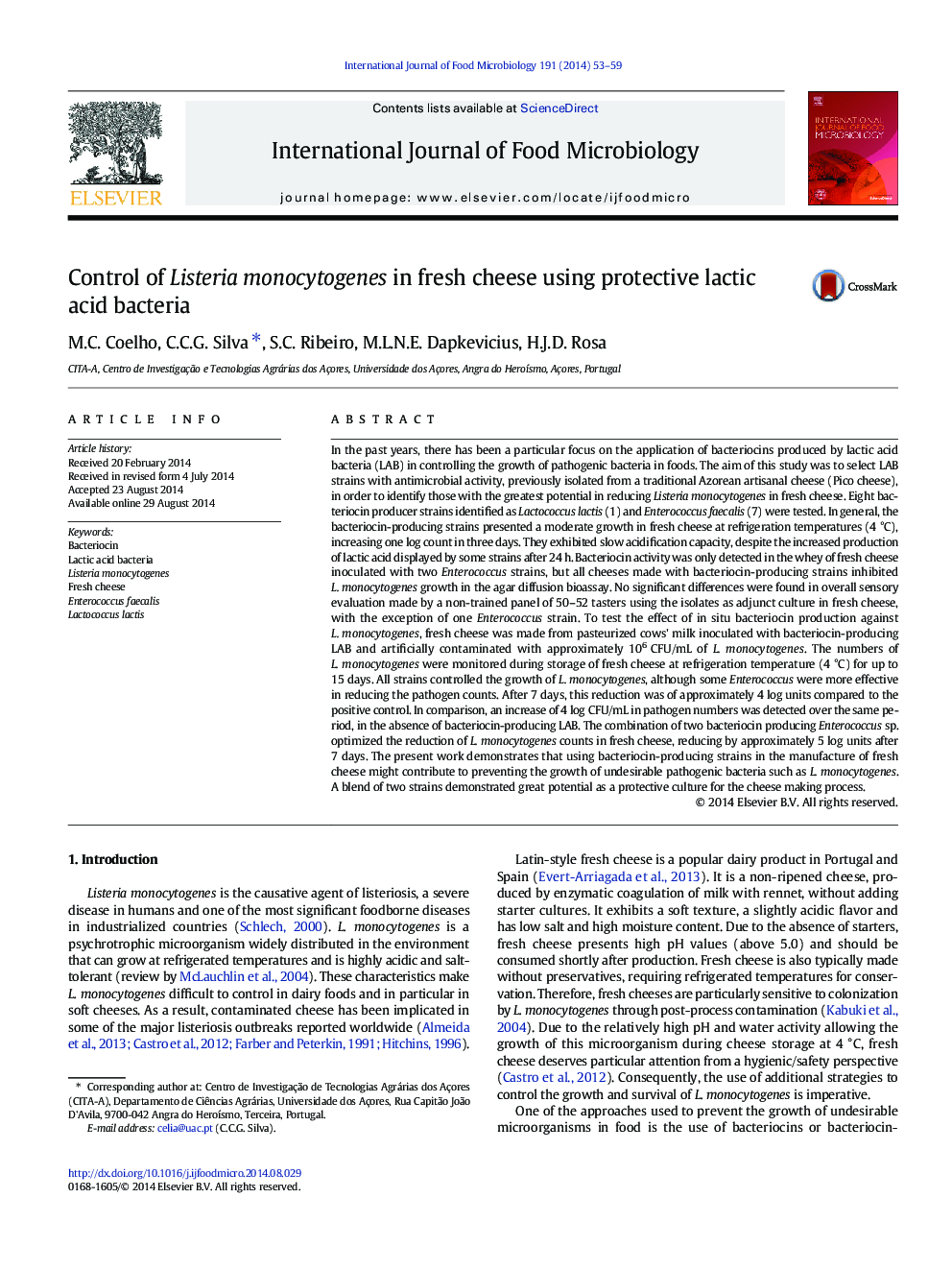| کد مقاله | کد نشریه | سال انتشار | مقاله انگلیسی | نسخه تمام متن |
|---|---|---|---|---|
| 4366720 | 1616592 | 2014 | 7 صفحه PDF | دانلود رایگان |

• Application of bacteriocin-producing lactic acid bacteria to control listeria in fresh cheese
• Bacteriocin-producing strains grow in fresh cheese at refrigeration temperatures.
• Sensory profiles of fresh cheeses produced with bacteriocinogenic strains were similar.
• All enterococci strains were effective in reducing listeria counts in fresh cheese.
• A combination of two strains reduced listeria in cheese by 5 log units.
In the past years, there has been a particular focus on the application of bacteriocins produced by lactic acid bacteria (LAB) in controlling the growth of pathogenic bacteria in foods. The aim of this study was to select LAB strains with antimicrobial activity, previously isolated from a traditional Azorean artisanal cheese (Pico cheese), in order to identify those with the greatest potential in reducing Listeria monocytogenes in fresh cheese. Eight bacteriocin producer strains identified as Lactococcus lactis (1) and Enterococcus faecalis (7) were tested. In general, the bacteriocin-producing strains presented a moderate growth in fresh cheese at refrigeration temperatures (4 °C), increasing one log count in three days. They exhibited slow acidification capacity, despite the increased production of lactic acid displayed by some strains after 24 h. Bacteriocin activity was only detected in the whey of fresh cheese inoculated with two Enterococcus strains, but all cheeses made with bacteriocin-producing strains inhibited L. monocytogenes growth in the agar diffusion bioassay. No significant differences were found in overall sensory evaluation made by a non-trained panel of 50–52 tasters using the isolates as adjunct culture in fresh cheese, with the exception of one Enterococcus strain. To test the effect of in situ bacteriocin production against L. monocytogenes, fresh cheese was made from pasteurized cows' milk inoculated with bacteriocin-producing LAB and artificially contaminated with approximately 106 CFU/mL of L. monocytogenes. The numbers of L. monocytogenes were monitored during storage of fresh cheese at refrigeration temperature (4 °C) for up to 15 days. All strains controlled the growth of L. monocytogenes, although some Enterococcus were more effective in reducing the pathogen counts. After 7 days, this reduction was of approximately 4 log units compared to the positive control. In comparison, an increase of 4 log CFU/mL in pathogen numbers was detected over the same period, in the absence of bacteriocin-producing LAB. The combination of two bacteriocin producing Enterococcus sp. optimized the reduction of L. monocytogenes counts in fresh cheese, reducing by approximately 5 log units after 7 days. The present work demonstrates that using bacteriocin-producing strains in the manufacture of fresh cheese might contribute to preventing the growth of undesirable pathogenic bacteria such as L. monocytogenes. A blend of two strains demonstrated great potential as a protective culture for the cheese making process.
Journal: International Journal of Food Microbiology - Volume 191, 17 November 2014, Pages 53–59